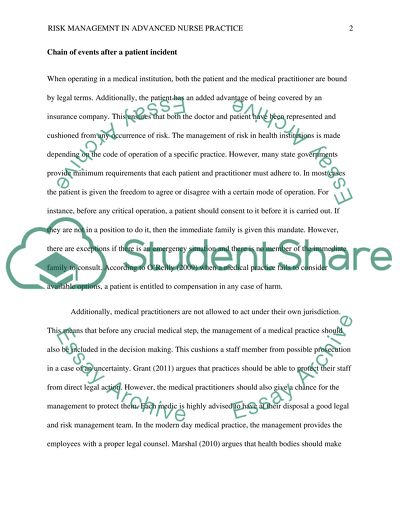Cite this document
(“Risk management in advanced nurse practice Essay”, n.d.)
Retrieved de https://studentshare.org/nursing/1460348-what-is-the-legal-and-risk-management-liability
Retrieved de https://studentshare.org/nursing/1460348-what-is-the-legal-and-risk-management-liability
(Risk Management in Advanced Nurse Practice Essay)
https://studentshare.org/nursing/1460348-what-is-the-legal-and-risk-management-liability.
https://studentshare.org/nursing/1460348-what-is-the-legal-and-risk-management-liability.
“Risk Management in Advanced Nurse Practice Essay”, n.d. https://studentshare.org/nursing/1460348-what-is-the-legal-and-risk-management-liability.


